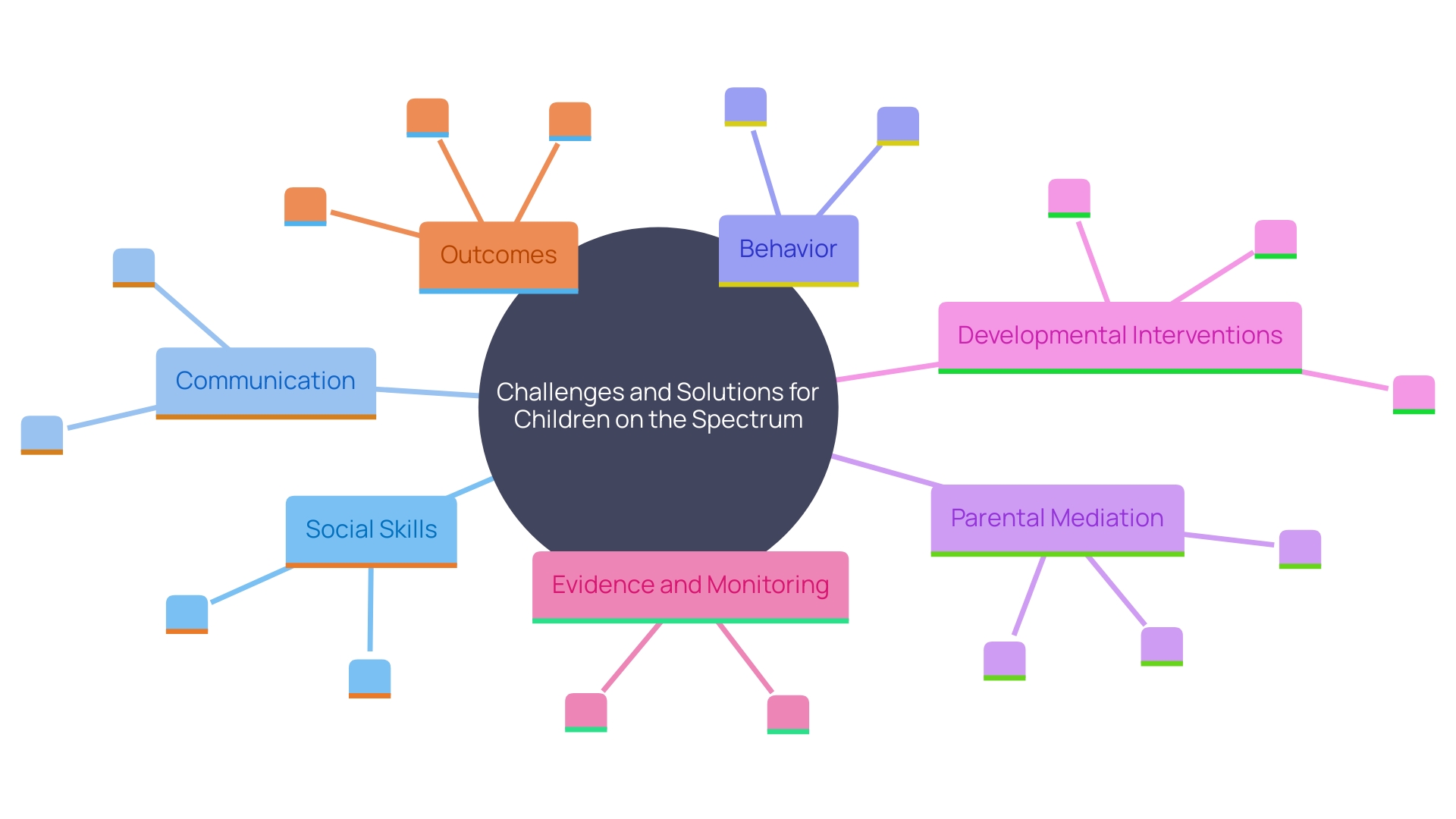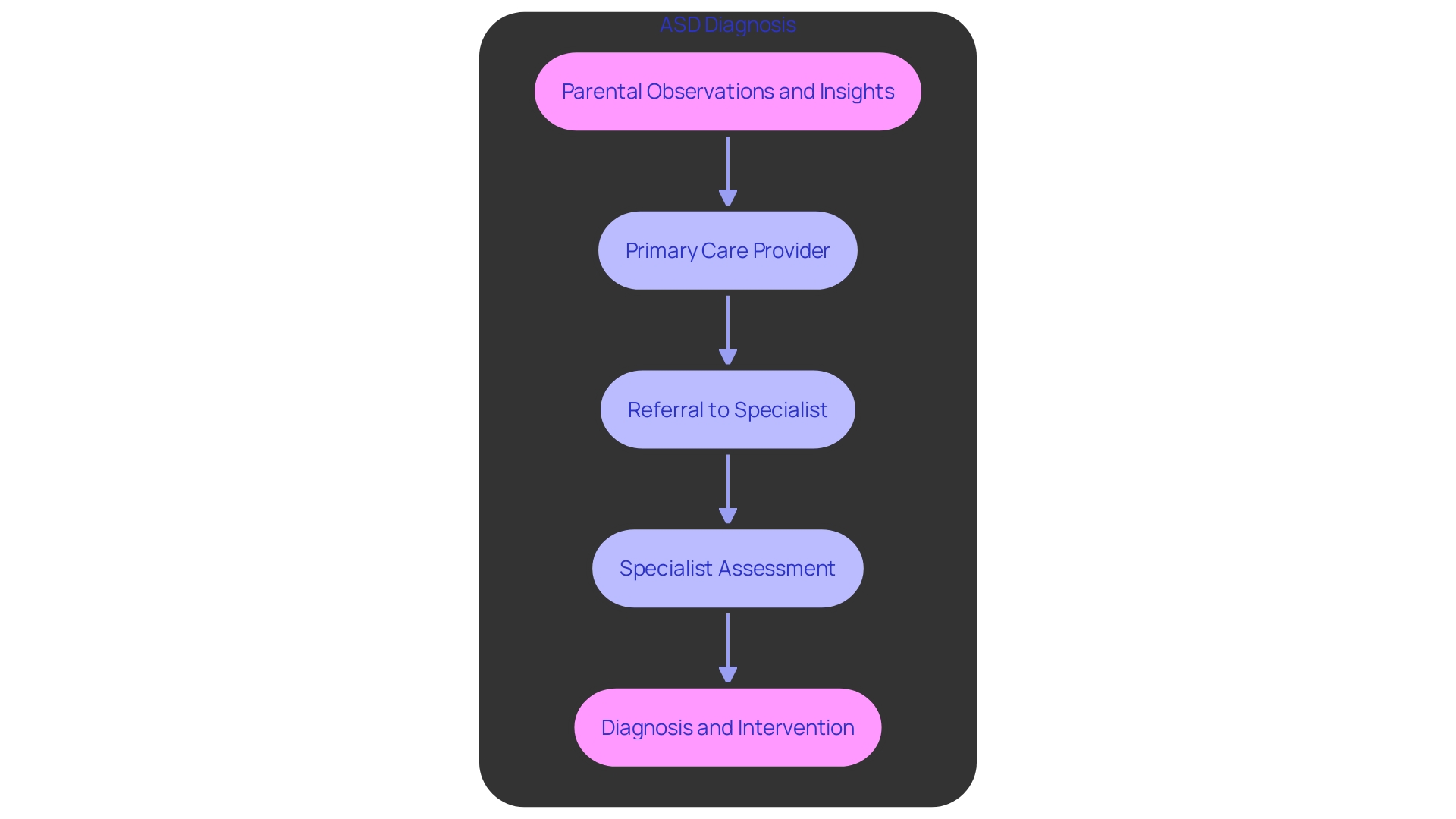Introduction
Autism Spectrum Disorder (ASD) is a multifaceted neurodevelopmental condition that significantly affects how individuals perceive and engage with the world. Characterized by a wide range of behaviors and abilities, ASD is best understood as a spectrum, with each child exhibiting unique strengths and challenges. Early diagnosis, based on comprehensive evaluations including parental insights and professional observations, is crucial for timely intervention.
Recognizing the common symptoms—such as social interaction difficulties, communication challenges, and repetitive behaviors—is vital for early support. Tailored interventions, especially those involving parental mediation, have shown remarkable success in improving social communication and adaptive behaviors. Understanding and embracing neurodiversity further promotes acceptance and equal opportunities, fostering an inclusive environment where every child with autism can thrive.
What is Autism Spectrum Disorder (ASD)?
Autism Spectrum Disorder (ASD) is a complex neurodevelopmental condition that influences how individuals perceive and interact with the world. Characterized by a broad range of behaviors and abilities, ASD is aptly described as a 'spectrum.' Each individual with autism displays unique characteristics, highlighting distinct strengths and challenges.
Professionals rely on a combination of parents' or caregivers' insights into their child's development and direct observation of behaviors to diagnose ASD. According to the DSM-5, these criteria help ensure a comprehensive evaluation. 'Prompt assistance and tailored support strategies can significantly enhance the quality of life for individuals with ASD.'. As noted by experts, “ASD affects people in different ways and continues throughout a person's life,” underscoring the importance of individualized approaches.
This understanding is crucial, as a recent study highlighted, aiming to bridge gaps in our knowledge of the brain's intricate connections in ASD. This insight is pivotal in developing effective, personalized treatment plans that cater to the unique needs of each individual.
Common Symptoms and Signs of Autism in Kids
Kids with developmental disorders frequently show a range of signs that can be crucial in early identification and support. These symptoms typically include difficulties in social interactions, challenges in communication, and repetitive behaviors. Some specific signs to watch for are limited eye contact, trouble understanding social cues, and a strong preference for routines.
Prompt identification of these indicators is essential as it results in timely assistance and action. According to the American Psychiatric Association's Diagnostic and Statistical Manual, Fifth Edition (DSM-5), identifying this spectrum disorder requires collecting detailed accounts of a young person's development from parents or caregivers and monitoring the individual's behavior by experts. This comprehensive method guarantees a well-rounded comprehension of the young one's needs, paving the way for early assistance.
Timely support is strongly recommended for young children with autism to promote skill development and enhance long-term results. Pediatricians frequently direct families toward these measures, which can differ significantly in method and intensity. In the U.S., initial intensive behavioral intervention is a common recommendation, involving 20-40 hours per week of targeted skills training.
Additionally, innovative diagnostic methods are emerging. For example, recent research has indicated that images of young ones' retinas can be utilized to evaluate developmental disorders with the assistance of artificial intelligence, possibly even determining the intensity of the condition. This emphasizes the continuous progress in research on developmental disorders, aiming to provide more precise and timely diagnoses.
In general, grasping these indicators and the significance of prompt assistance can greatly enhance the well-being of youngsters with developmental disorders and their families.
Types of Challenges in Autism: Social, Communication, and Behavioral
Children on the spectrum often face distinct difficulties in three main aspects: social skills, communication, and behavior. Socially, they may find it difficult to make friends or understand social norms. Communication hurdles can vary from delayed speech to trouble expressing thoughts clearly. Behavioral issues might include repetitive actions or a strong resistance to change. Studies indicate that prompt assistance, especially those facilitated by parents, can greatly enhance social communication in children with autism. Dr. Hannah Schertz from Indiana University emphasizes the significance of parental mediation in early support, as it tackles fundamental social communication challenges at an early stage.
Furthermore, research has demonstrated that naturalistic developmental behavioral strategies can improve adaptive behavior, language, play, and social communication. For instance, a comprehensive review involving over 13,000 participants found that developmental interventions significantly improve social communication (Hedges’ g=0.28, P=0.003), while naturalistic interventions also positively affect adaptive behavior and language.
Jan Stewart, a mental health and neurodiversity advocate, reminds parents that while finding the right help can be overwhelming, persistence is key. She assures parents that there is support available, and they are not alone in their journey.

How is Autism Diagnosed?
Diagnosing autism spectrum disorder (ASD) involves a detailed evaluation process, drawing from both professional observations and parental insights. According to the American Psychiatric Association's Diagnostic and Statistical Manual, Fifth Edition (DSM-5), standardized criteria guide this process, but no single tool should be relied upon exclusively. Healthcare professionals use a variety of diagnostic tools, with an emphasis on the descriptions provided by parents or caregivers regarding their offspring's development and behavior.
Parents play an indispensable role by offering detailed accounts of their offspring's behavior, which is crucial for an accurate diagnosis. In certain situations, primary care providers may direct families to specialists such as neurodevelopmental pediatricians, developmental-behavioral pediatricians, neurologists specializing in children, geneticists, or programs for further assessment. These specialists bring additional expertise and resources to ensure a comprehensive evaluation.
The significance of prompt diagnosis cannot be overstated. As Lisa Ackerman, founder of The Autism Community in Action (TACA), observes, 'The sooner your kid receives a diagnosis, the sooner they can begin gaining from crucial early support and medical care.' Prompt action has been demonstrated to greatly enhance results for individuals with ASD, making timely and precise diagnosis a crucial initial step.

Treatment Options for Autism: Therapy and Support
A variety of treatment options cater to the diverse needs of children with autism, enhancing their communication, social interactions, and capacity to handle sensory issues. Behavioral therapies, widely acknowledged for their effectiveness, play a significant role, especially when started promptly. For example, intensive behavioral support, which involves 20-40 hours of therapy per week, has demonstrated significant success in enhancing functional skills.
Speech therapy is another critical component, focusing on language development and communication skills. Developmental strategies, such as naturalistic developmental behavioral approaches, have been proven to enhance core challenges related to autism, especially difficulties with social communication. According to recent research, these interventions significantly enhance social communication and adaptive behaviors, highlighting their importance in early childhood development.
Social skills training assists youngsters in navigating social interactions more effectively, promoting better integration with peers. The Autism Community in Action (TACA) highlights the significance of choosing effective therapies that address individual needs, ensuring a customized approach for each young person.
Support systems, including family counseling and educational resources, are essential in fostering a nurturing environment. Evidence indicates that interventions involving caregivers enhance social interaction with youngsters, highlighting the importance of a supportive family dynamic. Organizations like TACA provide valuable resources and guidance, helping families make informed decisions about treatment options.
Overall, a comprehensive approach that combines various therapies and support systems can significantly enhance the quality of life for children with developmental disorders, promoting their growth and development in a nurturing environment.
Understanding and Embracing Neurodiversity
Neurodiversity honors the notion that neurological variations, including those on the spectrum, are a natural aspect of human diversity. This approach encourages communities to support and celebrate the unique qualities of individuals with autism. By advocating for greater accessibility and accommodations within academic and community settings, we can ensure equal opportunities for autistic individuals. Raising awareness about inclusive design, sensory-friendly environments, and flexible working and learning options is crucial. This perspective fosters acceptance and understanding, challenging stereotypes and promoting accurate representation in media and society. Standing in solidarity with autistic people as allies, we must amplify their voices and experiences, particularly in decision-making processes and discussions about policies and initiatives that affect them directly.
Conclusion
The multifaceted nature of Autism Spectrum Disorder (ASD) highlights the importance of early diagnosis and intervention in improving outcomes for children. By recognizing the unique traits and challenges that each child with autism presents, parents and caregivers can play a vital role in navigating the complexities of this condition. Comprehensive evaluations, informed by both parental insights and professional observations, are essential for accurate diagnosis and timely support.
Understanding the common symptoms such as social interaction difficulties, communication challenges, and behavioral patterns is crucial for early intervention. Implementing tailored strategies, particularly those that involve parental mediation, can significantly enhance social communication and adaptive behaviors. The evidence surrounding various treatment options, including behavioral therapies and developmental interventions, underscores the effectiveness of a personalized approach to meet each child’s unique needs.
Embracing the concept of neurodiversity fosters an inclusive environment where individuals with autism can thrive. Advocating for accessibility and accommodations in various settings not only supports the unique qualities of autistic individuals but also promotes a culture of acceptance and understanding. By amplifying the voices of those with autism and ensuring their participation in discussions that affect them, communities can work towards a more equitable future.
In summary, the journey of supporting a child with autism is one that requires knowledge, perseverance, and a commitment to fostering an inclusive society. With the right resources and support, every child can navigate their path with confidence, leading to a brighter future filled with opportunities.




